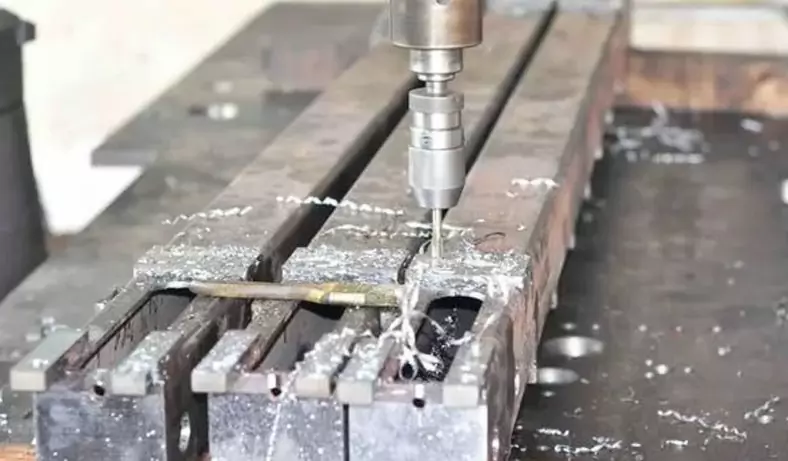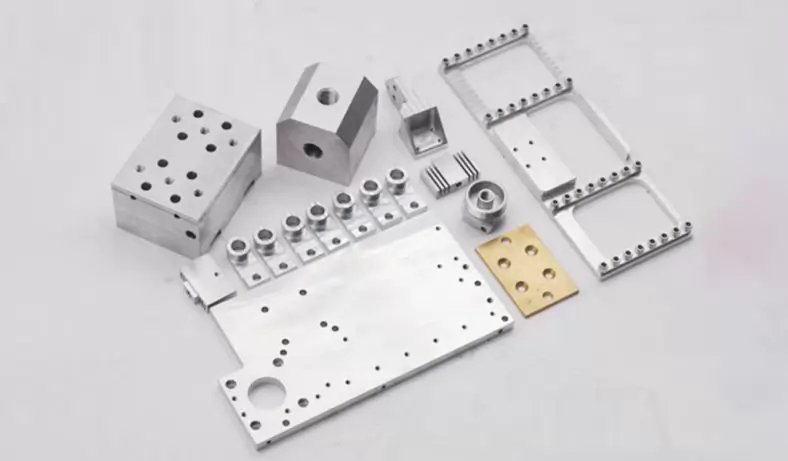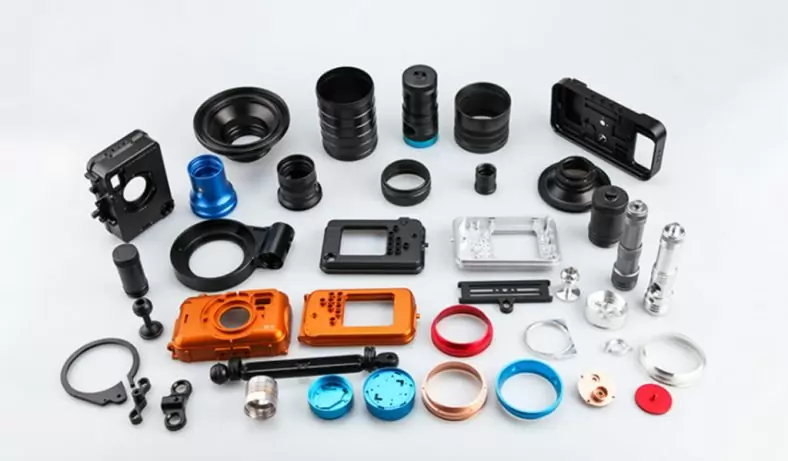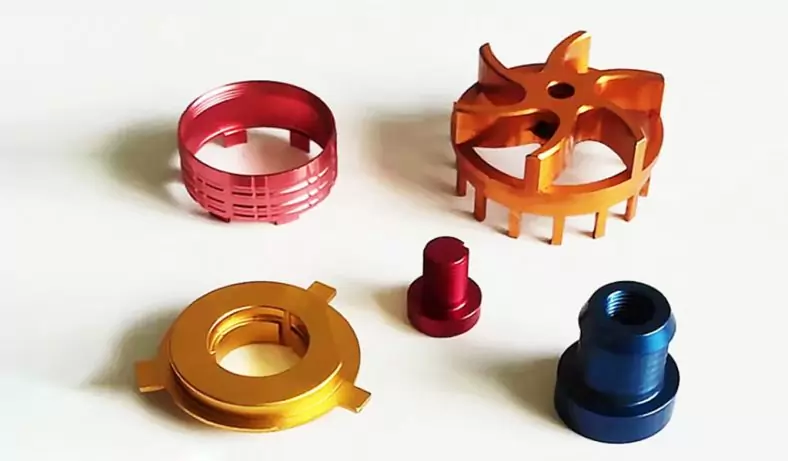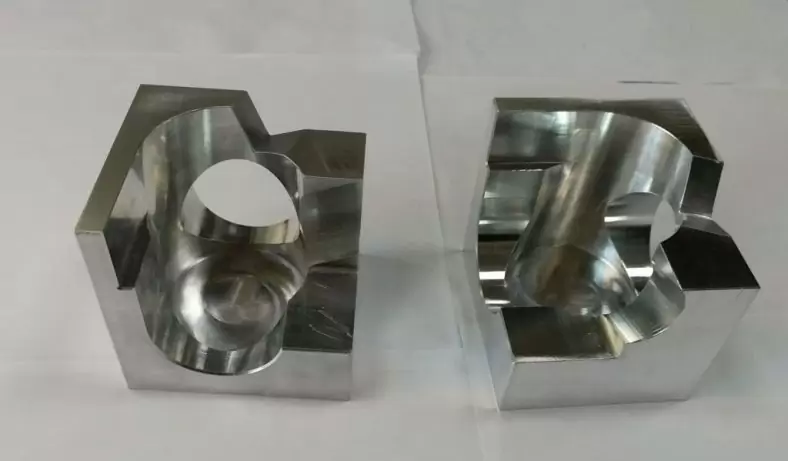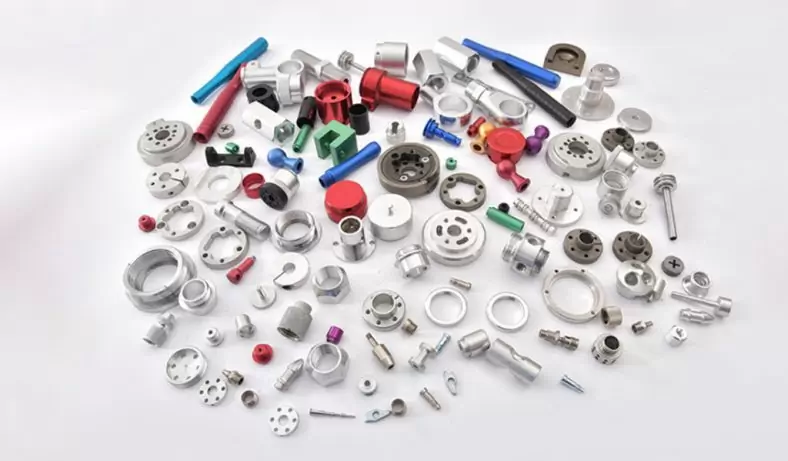Aluminum CNC machining is a versatile manufacturing process that offers precision and efficiency in producing intricate parts and components. One critical aspect of aluminum CNC machining is bending, which involves shaping aluminum sheets or profiles into desired forms. This article delves into the world of bending methods for aluminum CNC machining, highlighting their advantages, applications, and considerations.
Introduction to Aluminum CNC Machining
- Overview of CNC Machining: Computer Numerical Control (CNC) machining is a manufacturing process that employs computer-controlled machines to produce precise and intricate parts and components from various materials. CNC machines follow programmed instructions to perform tasks like drilling, cutting, milling, and shaping. This technology revolutionized manufacturing by enhancing accuracy, reducing human error, and increasing production efficiency.
- Significance of Aluminum in CNC Machining: Aluminum is a lightweight, durable, and corrosion-resistant metal that holds a crucial place in the realm of aluminum CNC machining. Its favorable properties, including excellent thermal and electrical conductivity, machinability, and recyclability, make it an ideal choice for a wide range of applications. From aerospace and automotive industries to consumer electronics, aluminum’s versatility continues to drive its popularity in CNC machining processes.
- Role of Bending in Aluminum CNC Machining: Bending is a critical process in aluminum CNC machining that involves deforming aluminum sheets or profiles to achieve desired shapes. This technique is vital for creating components with curved or angular geometries, such as brackets, enclosures, and frames. Bending enhances the functionality and aesthetics of parts, making it an indispensable step in many manufacturing processes.
Aluminum’s malleability and ductility make it particularly well-suited for bending operations. CNC bending machines, equipped with specialized tooling and precise control systems, ensure that the bending process maintains the material’s integrity while achieving the desired shape.

Aluminum CNC Bending Fundamentals
Bending Process Overview: Bending is a forming process that involves the deformation of a material, in this case, aluminum, to achieve a desired shape. In aluminum CNC machining, bending is a controlled operation performed using specialized machines and tooling. The material is subjected to force, causing it to bend around a specific axis. The bending process involves the application of stress to the material beyond its yield point, causing plastic deformation and resulting in the desired shape.
Factors Influencing Bending in Aluminum
Several factors influence the bending process when working with aluminum in CNC machining:
- Material Properties: The mechanical properties of the aluminum alloy, such as its ductility, malleability, and tensile strength, play a significant role in how it responds to bending. Different aluminum alloys have varying levels of these properties, impacting the ease and precision of the bending process.
- Material Thickness: Thicker aluminum sheets or profiles require higher bending forces to achieve the desired shape. However, excessive thickness can lead to challenges like springback, where the material partially returns to its original state after bending.
- Bend Radius: The radius of the bend determines the level of stress the material experiences during bending. Smaller bend radii increase the risk of cracking or deformation, especially in more brittle aluminum alloys.
- Tooling and Machine Setup: The choice of bending tooling, such as punches and dies, as well as the setup of the CNC bending machine, affects the precision and quality of the bend. Proper tool selection and calibration are essential for achieving accurate results.
- Bending Speed: The speed at which the material is bent can impact the overall quality of the bend. Too fast a bending speed may cause tearing or surface imperfections, while a slower speed can minimize such issues.
- Temperature: In some cases, especially with certain aluminum alloys, bending at elevated temperatures (hot bending) can reduce springback and improve the bending process’s overall predictability.
- Material Surface Finish: The surface finish of the aluminum can affect the friction between the material and the tooling, influencing the ease of bending and potential surface defects.
Importance of Material Selection
Selecting the appropriate aluminum alloy for CNC bending is crucial to achieving successful results. Different alloys offer varying levels of ductility, strength, and formability. Common aluminum alloys used for bending include 6061, 5052, and 3003. The choice of alloy depends on factors such as the required bend radius, the complexity of the shape, and the intended application of the final product.
Alloy selection also influences factors like tool wear, springback, and the need for annealing or heat treatment post-bending. Manufacturers need to strike a balance between the material’s mechanical properties and its compatibility with the chosen bending method.
Understanding the fundamentals of bending in aluminum CNC machining is vital for achieving precise and reliable results. Factors such as material properties, thickness, bend radius, tooling, and temperature all contribute to the success of the bending process. Equally important is the careful selection of the aluminum alloy, as different alloys offer distinct properties that impact the bending process’s efficiency and quality. By comprehending these fundamentals, manufacturers can optimize their bending processes and produce aluminum components that meet stringent requirements.
Common Bending Methods for Aluminum CNC Machining
1. Air Bending
- Principles of Air Bending: Air bending is a widely used bending method in aluminum CNC machining. In this method, the material is bent around a predetermined die profile using a punch that doesn’t touch the die. The punch applies force on the material, which flexes around the die’s radius. The material’s elastic recovery causes it to spring back slightly after bending, which is known as springback.
- Advantages and Limitations: Advantages of air bending include the ease of setup, reduced tool wear, and flexibility in achieving various bend angles. However, its reliance on springback prediction can sometimes lead to less predictable results, especially with varying aluminum alloys and thicknesses. It’s important to note that air bending might not achieve precise bend angles in all cases.
- Applications in Aluminum CNC Machining: Air bending is suitable for a wide range of aluminum CNC machining applications, from simple bends to complex geometries. It’s commonly used in industries like aerospace, automotive, and electronics where a high level of accuracy is required.
2. Bottoming
- Bottoming Process Explanation: Bottoming, also known as coining, involves bending aluminum to a point where the punch contacts the die, creating a sharp bend angle. Unlike air bending, bottoming doesn’t rely on springback, resulting in highly accurate bend angles. The process requires higher force due to direct contact between the punch and die.
- Material Thickness Considerations: Bottoming is well-suited for thin aluminum sheets with uniform thickness. Thicker materials might require excessive force, potentially leading to material failure or tool damage.
- Achieving Precision in Aluminum Bending: Bottoming ensures precise and consistent bend angles, making it suitable for applications demanding strict tolerances. It’s particularly useful for aluminum components requiring precise geometric shapes and minimal variation.
3. Coining
- Coining Technique Explained: Coining is a method that involves applying high pressure to aluminum between the punch and die to achieve precise bends with minimal springback. This process often results in sharp, well-defined angles and improved dimensional accuracy.
- Surface Finish and Hardness Considerations: Coining can improve the surface finish and hardness of the bent aluminum, making it favorable for components that require enhanced mechanical properties and appearance.
- Suitable Scenarios for Aluminum Coining: Coining is utilized when achieving accurate bend angles, tight tolerances, and improved surface characteristics are paramount. It’s commonly used in industries like electronics, where connectors and terminals demand both precision and durability.
4. Rotary Bending
- Introduction to Rotary Bending: Rotary bending involves bending aluminum profiles around a central pivot point. The material is clamped at one end while the other end is rotated around the pivot. This method is suitable for forming complex shapes and achieving consistent bend radii.
- Complex Shape Fabrication: Rotary bending is ideal for aluminum profiles with irregular or asymmetric geometries. It allows for the creation of intricate forms that might be challenging to achieve using other bending methods.
- Factors Affecting Forming in Aluminum: The success of rotary bending in aluminum CNC machining depends on factors such as material properties, profile design, and tooling geometry. Precise control of the bending angle and the rotation angle is crucial for achieving accurate results.
5. Wipe Bending
- Wipe Bending Methodology: Wipe bending involves gradually bending aluminum sheets or profiles over a curved die. The punch contacts the material along the entire bend line, gradually forming the desired shape. This method minimizes surface marks and distortions.
- Minimal Distortion Advantages: Wipe bending is chosen when achieving minimal distortion and maintaining the material’s surface finish are priorities. The gradual forming process reduces the risk of surface imperfections.
- Case Studies of Successful Aluminum Wipe Bending: Wipe bending is often employed in industries such as architecture and design, where aluminum components require precise shapes and impeccable aesthetics. Aluminum curtain walls, architectural panels, and decorative elements can benefit from wipe bending to maintain their visual appeal.
Understanding the various bending methods for aluminum CNC machining is essential for selecting the most appropriate technique for specific projects. Each method offers its own set of advantages and limitations, making them suitable for different applications. Whether precision, complexity, or surface finish is the primary concern, manufacturers can leverage these bending methods to create high-quality aluminum components that meet industry standards and customer expectations.
Advanced Bending Methods for Aluminum CNC Machining
1. Roll Bending:
- Roll Bending Mechanism: Roll bending, also known as three-roll bending, involves passing aluminum sheets through three rollers that apply pressure to the material. The top roller exerts downward force, while the two lower rollers move horizontally to shape the material around the top roller’s curve. Roll bending is often used for large-radius bends and cylindrical shapes.
- Curvature Precision and Consistency: Roll bending provides excellent curvature precision and consistency across the entire length of the material. This method is particularly suitable for aluminum components requiring uniform curvature along their length.
- High-volume Aluminum Production: Roll bending is ideal for high-volume aluminum production, where efficiency and consistency are paramount. It allows for rapid shaping of aluminum sheets into various profiles and can be automated for increased productivity.
2. Induction Bending:
- Induction Bending Process: Induction bending involves using electromagnetic induction to heat localized areas of an aluminum sheet or profile. The heated portion becomes more malleable and can be bent to the desired shape using external force. As the material cools, it retains its new form. Induction bending is commonly used for large and complex bends.
- Maintaining Material Strength: Induction bending minimizes the risk of material degradation due to localized heating. The controlled heating process preserves the aluminum’s mechanical properties, ensuring that the bent component retains its strength and integrity.
- Heat Management in Aluminum Bending: The induction bending process requires precise control of heat application to prevent overheating or material failure. Advanced induction bending equipment and techniques ensure that the temperature remains within a controlled range during the bending process.
3. Incremental Bending:
- Incremental Bending Overview: Incremental bending involves making a series of small, gradual bends to achieve a complex shape. Each incremental bend brings the aluminum closer to the desired form. This iterative process allows for precise control over the shape and minimizes the risk of errors.
- Tolerance Control and Iterative Process: Incremental bending is favored when tight tolerances and intricate shapes are required. The iterative nature of this method enables operators to adjust and refine the bend gradually, ensuring the final product meets design specifications.
- Aerospace and Automotive Aluminum Applications: Incremental bending finds applications in industries like aerospace and automotive, where aluminum components often have intricate shapes and demanding tolerances. Aircraft fuselages, car body panels, and engine components are examples of parts that can benefit from incremental bending.
Advanced bending methods in aluminum CNC machining offer solutions for specialized applications that demand a higher level of precision, efficiency, or complexity. Roll bending, induction bending, and incremental bending each bring unique advantages to the manufacturing process, catering to specific requirements in industries ranging from construction to transportation. By leveraging these advanced bending techniques, manufacturers can push the boundaries of aluminum CNC machining and deliver components that meet the highest standards of quality and performance.
Material Considerations in Aluminum Bending
Aluminum Alloys for CNC Bending
Selecting the right aluminum alloy is crucial for successful bending in CNC machining. Different alloys offer varying levels of ductility, strength, and formability, which directly impact how the material responds to bending processes. Common aluminum alloys used for bending include:
Work Hardening Effects
Work hardening occurs as aluminum is repeatedly bent or formed. When aluminum is bent, the outer layer of the material is stretched, causing a localized increase in hardness. This can lead to difficulties in achieving accurate bend angles and increases the risk of cracking, especially in more brittle alloys.
To mitigate work hardening effects, manufacturers often use techniques like annealing or employing softer aluminum alloys. Work-hardened aluminum can also be annealed to restore its original properties, making it more amenable to further bending.
Annealing and Post-Bending Treatments
Annealing is a heat treatment process used to soften aluminum and reduce work hardening effects. By heating the aluminum to a specific temperature and then cooling it slowly, manufacturers can restore the material’s ductility and make it more suitable for subsequent bending operations. Annealing is particularly beneficial for aluminum that has undergone significant work hardening.
Post-bending treatments also play a role in ensuring the final product’s quality. Heat treatments and stress-relief processes can be applied after bending to optimize the material’s mechanical properties, reduce residual stresses, and enhance dimensional stability. These treatments help maintain the integrity of the aluminum and prevent issues like springback.
Material considerations in aluminum bending are essential for achieving desired results in CNC machining. Selecting the appropriate aluminum alloy based on its properties and intended application is crucial. Understanding the effects of work hardening and employing techniques like annealing can help ensure that the material remains malleable and responsive to bending processes. Additionally, post-bending treatments play a role in optimizing the mechanical properties of the final product. By carefully managing material considerations, manufacturers can produce high-quality aluminum components with the desired shapes and characteristics.
Challenges and Best Practices in Aluminum Bending
Springback Phenomenon: Springback is a common challenge in aluminum bending and refers to the material’s tendency to return partially to its original shape after being bent. This occurs due to the elastic recovery of the aluminum after the bending force is removed. Springback can lead to discrepancies between the desired bend angle and the actual achieved angle, affecting the overall accuracy of the final component.
Best Practices
- Material Selection: Choosing the right aluminum alloy with appropriate mechanical properties can help mitigate springback effects.
- Overbending: Intentionally bending the material beyond the desired angle to compensate for springback can result in the desired final angle after the material springs back.
- Iterative Bending: Gradually adjusting the bend angle through multiple bending iterations can help counteract springback and achieve the desired final shape.
Tooling Selection and Design: The selection and design of bending tools play a pivotal role in achieving accurate and consistent bends in aluminum CNC machining.
Best Practices:
- Material Compatibility: Use tooling materials that are compatible with aluminum and won’t cause excessive wear or damage.
- Radii and Profiles: Ensure that the punch and die radii and profiles are well-matched to the material thickness and bend requirements.
- Anti-Springback Features: Incorporate anti-springback features into tooling designs to counteract the material’s natural tendency to spring back.
Finite Element Analysis for Bending Simulation: Finite Element Analysis (FEA) is a computational tool used to simulate and analyze complex bending processes in aluminum CNC machining.
Best Practices:
- Predictive Modeling: FEA can predict springback and deformation with accuracy, helping manufacturers anticipate the outcome of bending processes.
- Tool Path Optimization: FEA can assist in optimizing tool paths to minimize stress concentrations and achieve desired bend angles.
- Material Modeling: Accurate material properties are crucial for precise FEA results. Incorporate accurate material data for aluminum alloys into the simulation.
Aluminum bending in CNC machining presents challenges such as springback, which can impact the accuracy and consistency of bent components. Employing best practices like material selection, overbending, and iterative bending can help manage springback effects. The selection and design of appropriate bending tools, along with incorporating anti-springback features, contribute to successful bending operations. Additionally, utilizing Finite Element Analysis for bending simulations aids in predicting outcomes and optimizing tool paths for improved precision. By addressing these challenges and following best practices, manufacturers can enhance the quality of their aluminum bending processes and deliver components that meet stringent requirements.
Applications of Aluminum CNC Bending
Aluminum CNC bending has found its way into various industries due to its versatility, precision, and efficiency. Let’s explore how aluminum CNC bending plays a pivotal role in some key industries:
- 1. Aerospace and Aviation Industry: The aerospace and aviation industry demands lightweight yet strong components that meet strict performance and safety standards. Aluminum’s combination of low density and high strength-to-weight ratio makes it an ideal choice for aircraft structures, including fuselages, wings, and interior components. Aluminum CNC bending enables the creation of complex shapes and aerodynamic profiles required in aviation, ensuring optimal performance while keeping weight down. From brackets and panels to structural components, aluminum CNC bending contributes to the construction of modern and efficient aircraft.
- 2. Automotive Sector: Aluminum’s attributes, such as corrosion resistance, malleability, and low weight, align well with the automotive industry’s goals of improving fuel efficiency and reducing emissions. Aluminum CNC bending is employed in manufacturing parts ranging from body panels and structural components to heat shields and exhaust systems. The ability to form aluminum into intricate shapes contributes to vehicle aesthetics and aerodynamics. As electric vehicles gain prominence, aluminum’s conductivity and CNC bending capabilities facilitate the creation of battery housings and chassis components that meet both functional and design requirements.
- 3. Electronics and Consumer Goods: The electronics and consumer goods industries benefit from aluminum CNC bending for producing casings, enclosures, and housings for machining electronic devices, appliances, and gadgets. Aluminum’s electrical conductivity, thermal dissipation properties, and sleek appearance make it an ideal choice for items such as laptop casings, smartphone frames, and audio equipment enclosures. CNC bending ensures precise dimensions and attractive designs that meet consumer expectations for both functionality and aesthetics.
- 4. Architecture and Construction: In architecture and construction, aluminum CNC bending is integral to creating façades, cladding systems, and ornamental elements. Aluminum’s resistance to corrosion, weathering, and lightweight nature make it an excellent material for both exterior and interior applications. CNC bending allows architects and designers to realize their creative visions by forming aluminum into unique shapes that enhance the visual appeal and functionality of buildings and structures.
- 5. Marine Industry: The marine industry relies on aluminum CNC bending to fabricate hulls, superstructures, and various components for boats and ships. Aluminum’s resistance to saltwater corrosion and its lightweight nature contribute to improved vessel performance and fuel efficiency. CNC bending enables the construction of curved and contoured components that fit seamlessly into marine designs and marine cnc machining.
- 6. Medical Equipment and Instruments: Aluminum’s biocompatibility, sterilizability, and precision make it suitable for medical equipment and instruments. CNC bending is used to manufacture components such as bed frames, surgical instrument housings, and diagnostic device enclosures. The ability to create custom shapes and sizes ensures that medical equipment meets stringent requirements for functionality and safety.
Aluminum CNC bending finds applications across diverse industries due to its ability to produce precise, lightweight, and structurally sound components. From aviation and automotive to electronics and consumer goods, the versatility of aluminum CNC bending contributes to the creation of high-performance products that align with industry-specific demands and evolving technological trends.
Conclusion
In the world of aluminum CNC machining, bending methods play a pivotal role in shaping aluminum sheets and profiles into intricate and functional components. Throughout this comprehensive exploration, we’ve delved into the various bending methods, material considerations, challenges, applications, and future trends that define the realm of aluminum CNC bending.
- Recap of Bending Methods Explored: From traditional techniques like air bending and bottoming to advanced methods like roll bending, induction bending, and incremental bending, we’ve journeyed through the diverse spectrum of bending approaches. Each method comes with its unique set of advantages, limitations, and applications, catering to a wide range of industries and design requirements.
- Emphasis on Aluminum’s Prominence in CNC Machining: Aluminum’s remarkable properties have propelled it to the forefront of CNC machining. Its lightweight nature, excellent machinability, and versatility make it a go-to material for a multitude of applications across industries such as aerospace, automotive, electronics, and more. Whether it’s precision, aesthetics, or performance, aluminum delivers on multiple fronts, making it an integral player in modern manufacturing.
- Continuous Evolution of Bending Techniques: As technology continues to evolve, so do the methods and tools used in aluminum CNC bending. From the integration of AI-driven optimization and additive manufacturing synergies to the emphasis on sustainability and recycling, the future of aluminum CNC bending is marked by innovation, efficiency, and environmental responsibility. The industry’s adaptation to hybrid techniques and digital simulation underscores its commitment to staying at the forefront of manufacturing excellence.
In a world where precision, efficiency, and sustainability are paramount, aluminum CNC bending stands as a testament to the ingenuity of manufacturing. It’s a process that combines art and science, transforming raw aluminum into components that power industries, vehicles, electronics, and structures.
As we conclude this journey through the world of aluminum CNC bending, it’s clear that this process is more than just a technique—it’s a vital part of the manufacturing ecosystem that shapes the products we rely on every day. With each bend, aluminum CNC machining reinforces its position as a driving force in modern engineering, connecting design visions to tangible realities and advancing industries toward a future of innovation and possibility.


